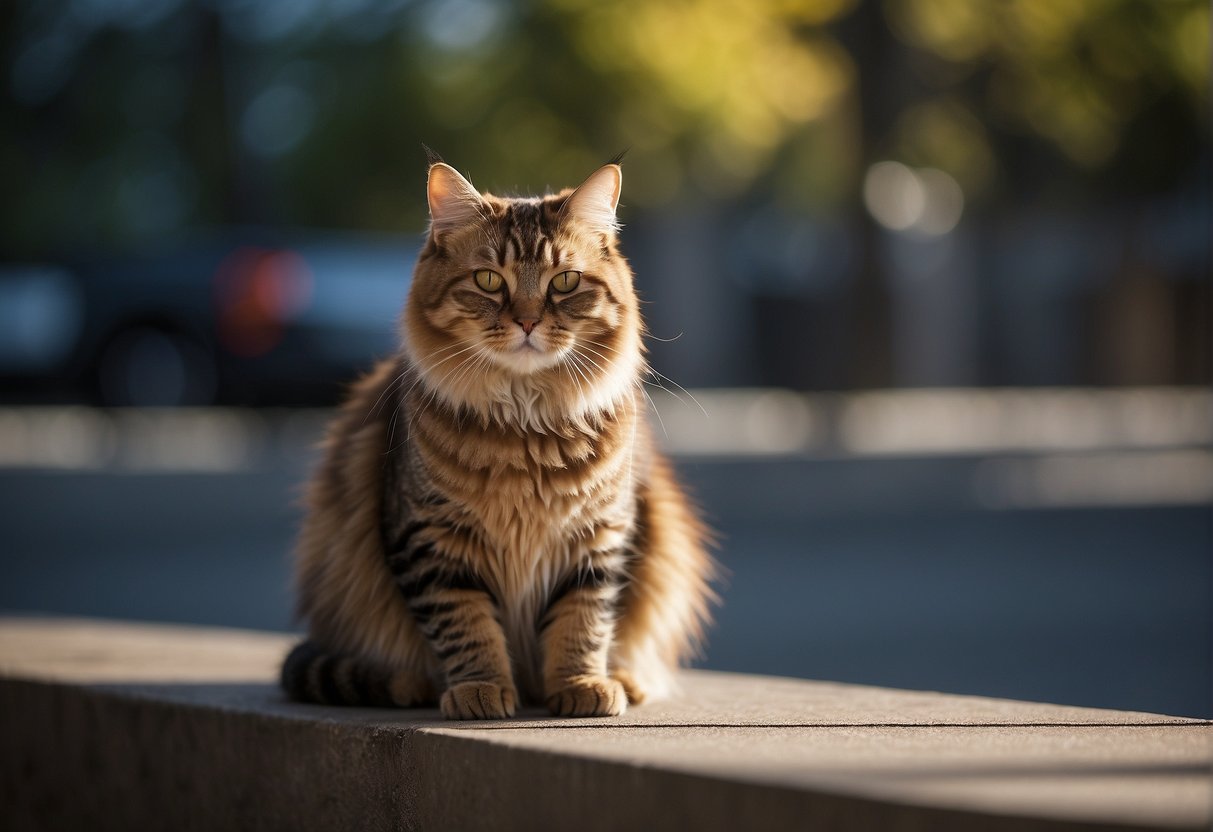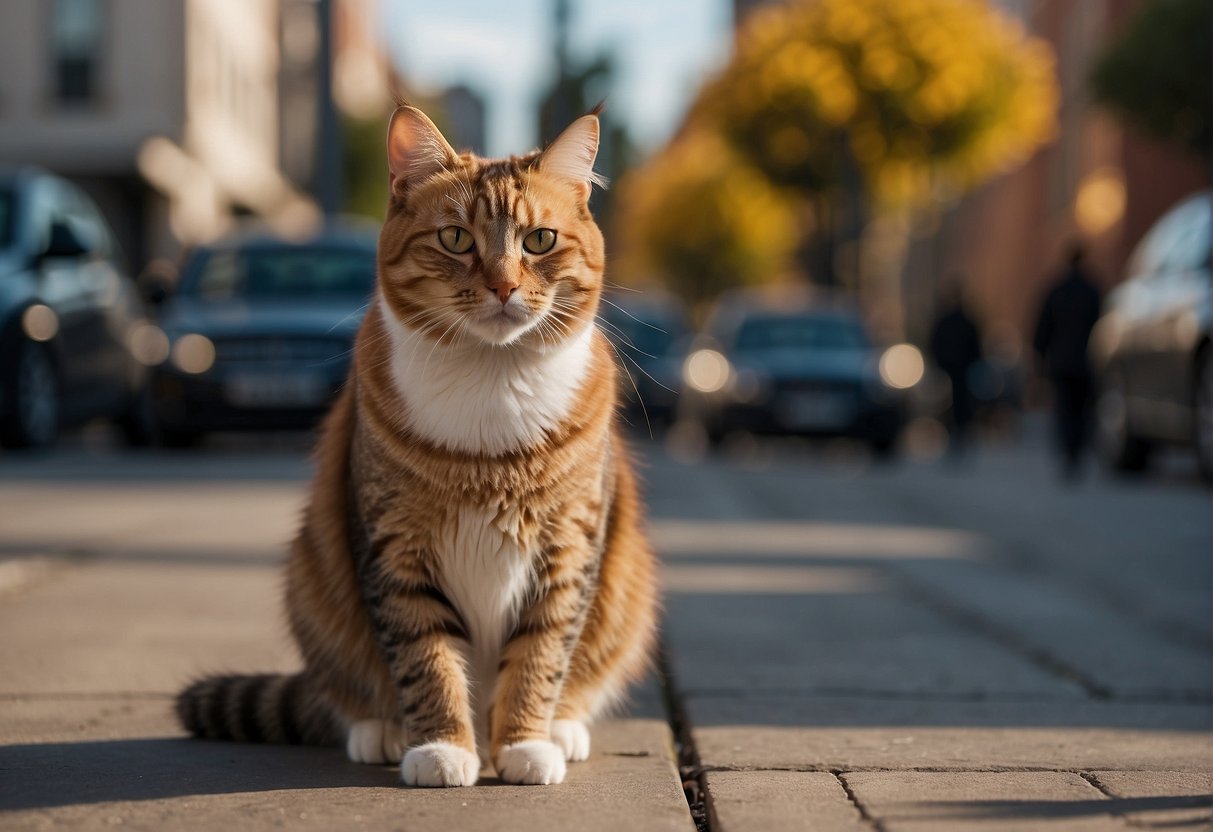Cats cannot be autistic in the way humans can. Autism is a human-specific spectrum disorder, and there’s no evidence suggesting that feline behaviors align with this condition.
As a cat owner, you might notice your furry friend engaging in a routine that seems remarkably rigid, similar to the repetitive behaviors sometimes exhibited by humans on the autism spectrum.
For instance, your cat may feel most comfortable when mealtimes and play sessions happen precisely on schedule. They may show signs of distress if their routine is disrupted.

It’s common to interpret their actions through the lens of human psychology.
For example, a cat who is less social or doesn’t respond to calls the way you’d expect might be seen as having traits comparable to autism. However, this is often just a manifestation of their independent nature or a sign that they are comfortable in their territory.
When diving into the quirks of cat behavior, it’s important to remember that many traits considered ‘odd’ are well within the range of normal feline behavior.
For example, a cat may fixate on certain toys or engage in what looks like self-stimulatory behavior, but this is typically a part of their playful instincts and hunting practices.
Observing from a knowledgeable standpoint, this kind of behavior reflects their instinctual need for mental stimulation and physical exercise rather than anything resembling a human neurological condition.
Understanding Autism in Cats

When exploring the intriguing topic of feline behaviors, it’s essential to understand the traits associated with autism spectrum disorder in humans and question the applicability of these traits to our feline companions.
Defining Feline Autism Spectrum Disorder
Autism spectrum disorder (ASD) in humans is a complex developmental condition characterized by challenges with social interaction, communication, and often exhibited through repetitive behaviors.
While autism is a human diagnosis, some cat owners ponder if their cats can exhibit similar autistic tendencies. It’s crucial to note that veterinarians and scientists have not officially recognized autism in cats as a legitimate mental health condition. Cats display a wide array of behaviors, but these are not formally diagnosed as ASD.
- Social Interaction: Cats may display varying degrees of social responsiveness, ranging from aloofness to affectionate behavior.
- Communication: They communicate differently from humans, relying more on body language and vocalizations.
- Symptoms: Behaviors that may be perceived as symptoms of autism in humans, such as indifference to social cues or repetitive actions, are usually within the spectrum of normal cat behavior.
Anthropomorphizing vs. Scientific Observations
The tendency to anthropomorphize, or attribute human traits to animals, might lead you to interpret your cat’s independent nature or unusual habits as autistic behavior. However, scientific observations generally attribute these to a cat’s instinctual and personality-driven behaviors rather than a condition like autism.
- Anthropomorphizing: Assigning human-like motives or conditions to cat behaviors.
- Scientific Observations: Analyzing behaviors based on feline instincts and individual personalities.
It’s easy to misinterpret a cat’s preference for solitude or certain repetitive behaviors—such as paw flicking or tail chasing—as signs of autism. Yet, these can often be explained by their natural temperament or environmental stressors.
Encountering new or unfamiliar situations can result in a cat displaying atypical behaviors, which doesn’t necessarily indicate a mental health disorder.
Recognizing Autistic-Like Behaviors in Cats
When you’re closely observing your cat, you might notice certain actions or patterns that seem unusual or reminiscent of autistic behaviors in humans.
Common Symptoms and Behaviors
Behavior: Cats can be enigmatic, often exhibiting a range of behaviors that may appear similar to what we understand as autistic behaviors in humans. One key sign is a noticeable difficulty in social interactions.
Your cat might seem aloof or particularly independent, preferring solitude over the company of other pets or even humans. It’s important to differentiate between a cat’s natural independent streak and behaviors that suggest discomfort or anxiety with socialization.
Communication: In terms of nonverbal communication, some cats may display less eye contact and seem indifferent to attempts to engage them.
Just like people, cats use body language to communicate. It’s not just about how much they meow, but also their posture, tail movements, and ear positions that give you insight into their feelings and needs.
Repetitive Behaviors: Cats can sometimes show repetitive behaviors, such as excessive grooming or pacing back and forth without any apparent goal.
Think of it as a cat’s way of trying to cope with stress or anxiety — kind of like how you might tap your fingers or fidget when you’re nervous.
Vocalization: You might also come across excessive vocalization in cats, with persistent meows or other sounds that go beyond their typical communication patterns.
This could be due to a desire for attention, to indicate distress, or as a response to environmental changes.
Sensory Abnormalities: Some felines may exhibit signs of sensory abnormalities, showing hypersensitivity to touch, sound, or light.
This might lead to startling easily at sudden noises or avoiding being touched in areas that are usually pleasurable for most cats, like under the chin or at the base of the tail.
Anxiety and Stress: Observe if your cat seems particularly anxious or stressed by changes in the environment. A new piece of furniture or a shift in the household routine can be a significant stressor for sensitive cats.
Health and Environmental Considerations
When it comes to understanding your cat’s unusual actions, it’s essential to consider health issues that may resemble behavioral conditions and how factors like stress from their environment can play a role.
Medical Conditions Mimicking Autism
Cats cannot be autistic as humans can be; the term “autism” doesn’t translate directly to feline medical conditions. However, certain health issues can cause behaviors in your cat that might seem similar to autism spectrum behaviors in humans. For instance:
- Obsessive-Compulsive Disorder (OCD): Your cat might exhibit repetitive behaviors, like excessive grooming, which can stem from stress or anxiety.
- Cerebellar Hypoplasia: A neurological condition that affects coordination and fine motor skills, making actions appear jerky or uncoordinated.
- Sensory Processing Issues: They may react to stimuli in ways that are either under or over the top, often confused with autism-like behaviors.
The Impact of Environment and Stress
Your cat’s environment plays a significant role in its health and behavior. Factors such as a change of residence or the addition of a new pet may lead to stress-related behaviors that can be misconstrued as something more. For your cat’s well-being, consider the following:
- Environmental Stressors:
- Loud noises: These can trigger fear responses.
- Limited space: A lack of room to explore may lead to stress.
- Lack of stimulation: Cats need interaction and play for a balanced mental state.
- Health and Quality of Life:
- Regular vet check-ups are crucial to identify and treat underlying health issues like diabetes or kidney disease early.
- Trauma history: A past filled with negative experiences can significantly impact your cat’s demeanor and should be managed delicately.
Caring for a Cat with Autistic-Like Behaviors
When your cat displays behaviors that seem similar to autism, understanding and adapting to their needs can enhance their well-being.
Veterinary Assessment and Diagnosis
The first step in caring for a cat that may exhibit signs like repetitive behaviors or social skills challenges is to consult with a veterinarian.
Cats cannot be diagnosed with autism as humans can, but they can have medical conditions that may cause similar signs. A vet or a veterinary behaviorist can assess whether your cat’s behaviors are due to a medical issue or are just a part of their unique personality.
- Schedule a thorough check-up: Start with a complete medical examination to rule out any underlying health concerns that could be affecting your cat’s behavior.
- Consider behavioral assessment: If health issues are ruled out, a veterinary behaviorist may offer an assessment on whether your cat’s behavior is a concern or simply a quirk.
Living with and Supporting Your Cat
Creating a supportive environment for a cat with unique behaviors involves patience and understanding. Here’s how you can ensure a high quality of life for your special needs companion.
- Manage Anxiety and Sensory Issues:
- Provide a safe space where your cat can retreat and feel secure.
- Consider using pheromone diffusers to help soothe your cat.
- Support Repetitive Behaviors:
- If the behaviors aren’t harmful, allow your cat to engage in them as a form of self-soothing.
- Enhance Social Skills and Companionship:
- Spend quality time with your cat to build trust and companionship.
- Introduce new people or animals slowly and in a controlled environment.
- Care for Your Cat’s Overall Well-being:
- Offer a balanced diet and regular exercise to maintain good health.
- Keep a routine, as predictability can help reduce stress for cats with anxiety.

My name is James, and welcome to FAQCats!
Along with our team of cat owners, expert pet enthusiasts, and pet professionals, we aim to write engaging helpful, engaging content about cats. At FAQCats we strive to provide content that’s accurate and fun to read. Our team writes about everything related to cats; even the most complex of topics. Through extensive research and caring for our own fur-pals, we’re able to provide something cat owners worldwide will love. Have a look around, and leave us feedback anytime!

